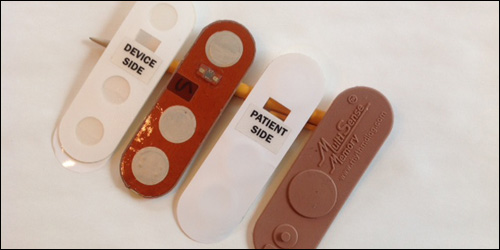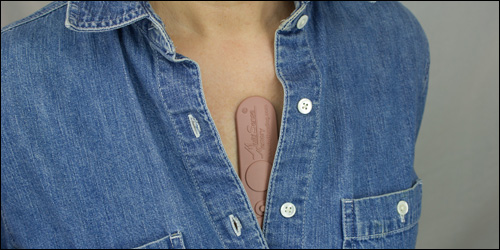A technology that was originally developed to help companies track the health of jet engines will soon be used to track the health of humans—for a clinical trial set up to treat Ebola patients in West Africa.
“Our technology is a platform that builds a personalized baseline on each thing that we monitor, in order to see a problem developing very early on,” explains Gary Conkright, who served as the founding CEO of SmartSignal Corp., which General Electric acquired in 2011. Today, Conkright serves as CEO of PhysIQ, where he and other former SmartSignal principals have developed a system for analyzing data to track a different kind of system: human physiology.
“Human physiology is just another complex machine, and by monitoring it you can learn the unique baseline for each patient,” he says, describing how PhysIQ’s system works. “We compare you to you instead of comparing you to baseline averages for the entire population.”
To get a baseline reading of an individual’s physiology, PhysIQ needs three or more data streams, such as heart rate, respiration rate, the oxygen saturation level of blood, heart-rate variability (how your heart rhythm changes). “Our approach takes all those inputs and learns, over a day or so, your unique physiology. When the interactions change—it can be very subtle, like an extra heart beat or breath per minute—that can show an exacerbation of some sort happening.”
Two clinical studies involving congestive heart failure patients, who wore monitors that transmitted vitals over a cellular network, showed the PhysIQ could detect subtle changes about six days before that patient winds up in ER, says Conkright. Next up for PhysIQ is an initiative called STAMP2, set to take place soon in West Africa and led by Scripps Translational Science Institute and also involving two medical device companies, Sotera Wireless and Rhythm Diagnostic Systems.
STAMP2, short for “Sensor Technology and Analytics to Monitor, Predict and Protect Ebola Patients” is being funded through Fighting Ebola: A Grand Challenge for Development, a program led by USAID, in collaboration with the White House Office of Science and Technology, the Centers for Disease Control and Prevention and the Department of Defense. The aim is to evaluate the effectiveness of wireless devices for monitoring vital signs—specifically, products made by Rhythm Diagnostic Systems—and the PhysIQ software to look for very early signs of degrading health.
Steven Steinhubl, M.D., director of digital medicine at Scripps Health, explains that Sotera’s ViSi Mobile, an FDA-approved device for monitoring vital signs and transmitting them wirelessly via Wi-Fi, will serve as a control in the program, used to gauge the accuracy and effectiveness of the MultiSense patch made by Rhythm Diagnostic Systems. MultiSense integrates sensors that track heart rate, blood oxygen saturation, respiration rate and temperature, into a device that looks like a large Band-Aid and which can transmit the collected data over Bluetooth to a smartphone or computer. The MultiSense patch is not yet FDA-approved, so using it outside the U.S. provides a way for the Scripps Translational Science Institute, which focuses on evaluating digital technology for health care, to study its effectiveness in a clinical setting.
But more importantly, says Steinhubl, a device like MultiSense is well-suited for use in field clinics in developing countries because it is more affordable than the Sotera device and because smartphones with Bluetooth connectivity may be more accessible than a Wi-Fi network in some locations.
The other big driver for using wireless vitals tracking in treating Ebola patients, however, is the fact that they help reduce direct physical contact between patients and health-care workers.
“The PhysIQ algorithm looks at vitals and how they’re interacting and looks for when the patient is beginning to [deteriorate]—so not just tracking a fever but how the fever relates to other vitals. Right now, Ebola patients just get their vitals measured every eight hours, so you have a huge window where you’re not able to track these,” says Steinhubl.
STAMP2 was initially set to begin in March, but Steinhubl says the logistics involved in setting up the trial have been difficult. The Grand Challenge program initially sent so many health-care workers and researchers to the areas most impacted by Ebola, people were “tripping over each other,” which made scheduling the STAMP2 trial difficult. Nowadays, with the number of patients greatly reduced, the trial may need to be redesigned. “The goal is to track 20 patients, ideally from when they are admitted until the time of discharge, and when we wrote the grant we thought we could do that in a week. But now we might need to train people locally [to complete the research] because we may not be able to put the resources in the field long enough to track 20 patients,” Steinhubl explains.
Once the initial trial is complete, the hope is to extend the program to the relatives of Ebola patients, as a means of looking for very early signs of Ebola—hopefully even before the virus has any chance of spreading to others.



